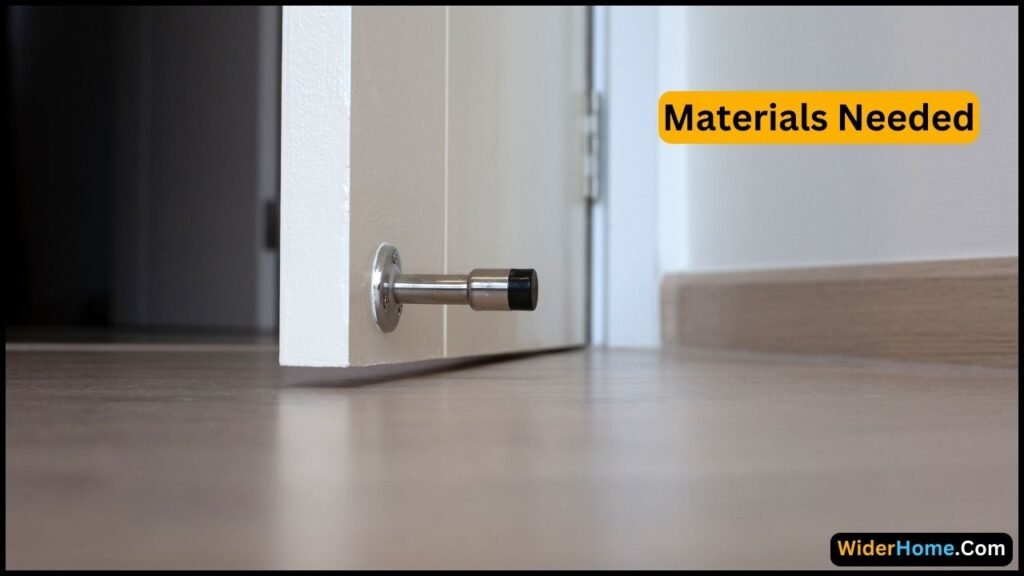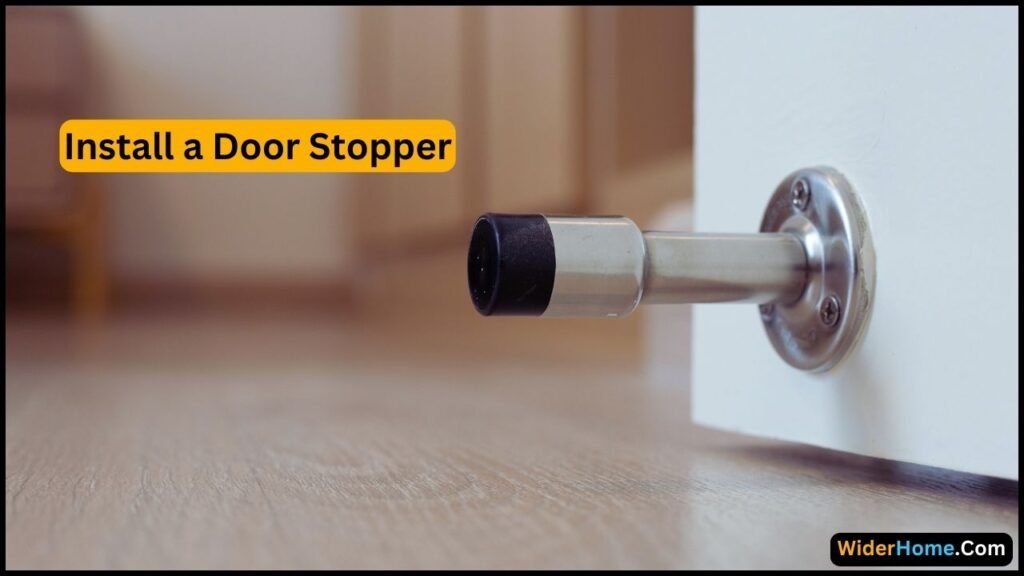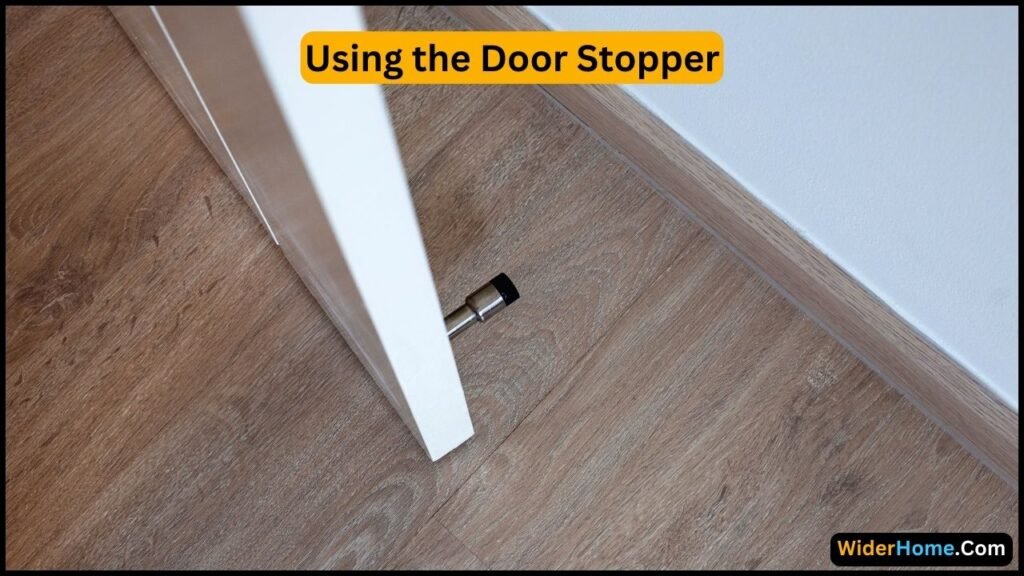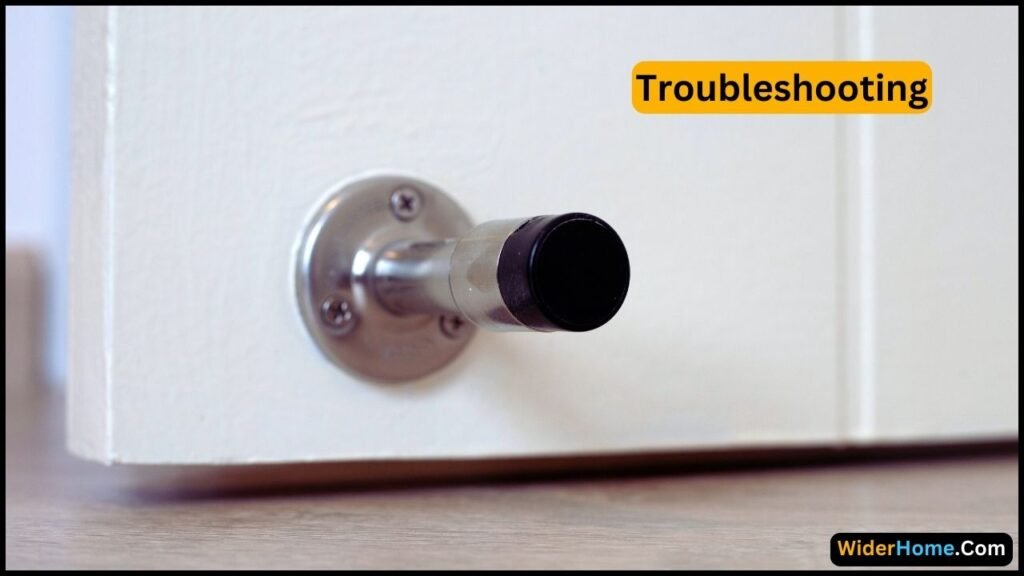How to Install and Use Door Stopper?

Door stoppers are essential to preserving any space’s usability and security. These little gadgets are intended to hold doors in place and stop them from suddenly swinging shut. This improves general safety by keeping doors from closing on fingers, tails, or objects placed in entrances. Additionally, it protects furniture and walls from possible harm caused by door knobs. Door stoppers are a priceless addition to security and convenience in both homes and offices. They also lessen noise pollution by averting the sound of slamming doors.
Types of Door Stopper
Wall-Mounted Door Stoppers
Wall-mounted door stoppers are bolted to the wall behind the door. When the door opens, the stopper is stuck, shielding the wall from any damage caused by the door handle or knob. Rubber tips are frequently used on these stoppers to reduce impact.
Floor-Mounted Door Stoppers
The floor where the door swings open is equipped with floor-mounted door stoppers. They can simply keep the door from colliding with surrounding objects, or they can hold it in place. For hefty doors and high-traffic locations, these are perfect.
Spring Door Stoppers
One kind of wall-mounted stopper with a flexible, spring-like form is the spring door stopper. The door and the wall are shielded from harm when they strike the spring, which absorbs the force and springs back.
Hinge Pin Door Stoppers
Door stoppers with hinge pins are put right onto the hinge of the door. They have a neat appearance because they are tiny and inconspicuous. The door can be stopped from striking furniture or walls by adjusting how far it opens with these adjustable stoppers.
Magnetic Door Stoppers
With magnetic door stoppers, the door is held open by magnets. Parts one and two are fastened to the wall or floor and the door, respectively. The magnets within the door attract when it is opened and hold it in place until it is pulled closed.
Hook and Eye Door Holders
Door holders with hooks and eyes are made out of an eye, or tiny loop, mounted on the wall or floor, and a hook fastened to the door. You just hook the two together if you wish to keep the door open. These hold doors open simply and effectively.
Wedge Door Stoppers
At the bottom edge of the door are wedge door stoppers. These are often made of rubber or wood and are tightly wedged between the floor and the door to hold it in place. They are portable and very good for brief uses.
Materials Needed for Door Stopper

A door stopper installation requires a few common supplies. What you’ll need is as follows:
- Door Stopper Kit: This is the primary component and typically comes with the door stopper and any other pieces required for installation.
- Drill or Screwdriver: A drill or screwdriver is an instrument used to make holes and fasten the stopper. A screwdriver can also be used, but a drill is quicker.
- Measuring Tape: Using a measuring tape, mark the precise locations where the stopper will be inserted.
- Pencil: To indicate the locations for drilling or screwing.
- Screws: Depending on your circumstances, you may need additional screws. However, these are occasionally included with the door stopper package.
It will be much easier and faster to install if you have these supplies ready before you begin.
How do you Install a Door Stopper?

Step 1: Gather Your Materials
Prior to starting the installation, assemble every part listed above. Together with your door stopper kit, this also includes the screws, measuring tape, pencil, drill, and screwdriver. Everything being easily accessible will facilitate a more seamless procedure.
Step 2: Mark the Position
Mark the Position Of your door stopper in the best possible location using measuring tape. Door stoppers are typically installed directly behind doors or adjacent to their edges to ensure that they are caught when they open. Once the spot has been selected, use the pencil to indicate with the marking where the screws should be drilled or placed.
Step 3: Drill Pilot Holes
Use a drill to make tiny pilot holes at the designated locations. In order to prevent the splitting of the wood or other material, pilot holes aid in screw guidance. You can skip this step if you’re using a screwdriver, but be ready to exert greater force when driving the screws in.
Step 4: Attach the Door Stopper
Place the door stopper base in line with the pilot holes or indicated locations. Put the screws through the base and into the floor or door to secure it. Make sure the stopper is flush with the surface and securely fastened.
Step 5: Test the Door Stopper
To test the stopper, open and close the door. Make sure the door is held or caught in the intended manner. You may need to slightly reposition the door stopper or tighten the screws if it is not operating properly.
You can install a door stopper properly and improve the convenience and safety of your space by following these easy instructions.
Using the Door Stopper

Understand the doorstopper’s Position
After installing your door stopper, spend a bit getting to know where it is. In order to properly catch the door when it opens, it is typically situated right behind the door or next to its edge.
Open the Door
Open the door gradually until it comes in contact with the door stopper in order to use it. To prevent any possible harm to the door or the stopper, be sure to open the door gently.
Secure in Place
You can leave the door in that Position once it has made contact with the stopper. The door stopper will hold the door open and stop it from swinging further. This is especially helpful if you need to carry something through the entryway or if the door needs to be open for a lengthy time.
Close the Door
Just close the door like you typically would when you’re done using it. When the door swings shut, the door stopper will come loose.
You may make your area safer and more convenient by using your door stopper efficiently by following these tips.
Troubleshooting

Even after a cautious installation, there can still be problems with your door stopper. The following are some typical issues and how to fix them:
Door Stopper Not Holding the Door
- Issue: The door is not securely held in place by the door stopper.
- Solution: Verify that the door stopper is installed properly. It must be positioned where the door stops on its own. Make sure the stopper is fully in contact with the door and that the screws are tightened.
Loose Door Stopper
- Issue: Over time, the door stopper gets loose.
- Solution: Make sure all fastenings are secure and tighten any loose screws. Use longer screws or anchors appropriate for the kind of material you’re fastening onto (such as drywall anchors) if the stopper keeps coming loose.
Damage to Door or Floor
- Issue: There are indications of damage to the door or floor in the vicinity of the stopper.
- Solution: Verify that the door stopper is free of any sharp edges. To safeguard the door and floor, you might need to provide the stopper with some padding or rubber tips. Make that the installation location is adequate and that the right screws are utilized.
Door Stopper Misalignment
- Issue: The stopper is not in line with the door, which makes it operate incorrectly.
- Solution: Recheck your measurements and placement as a solution. For the stopper to function as intended, it must be positioned at the proper height and distance from the door. Never hesitate to make the required adjustments or, if necessary, re-drill the pilot holes.
Squeaking Noise
- Issue: A squeaking sound is made when the door meets the door stopper.
- Solution: Any moving parts should be lubricated with a small amount of silicone spray or oil. Verify that all rubber and plastic parts are clear of debris and dust.
Frequently Asked Questions
How are door stoppers used?
Doors can be stopped from hitting walls or other objects and sustaining damage by utilizing door stoppers. It is simple to put the door stopper where it will stop the door from opening too far. For example, a wedge stopper is positioned beneath a door to keep it in place, and a wall-mounted stopper is fixed on the wall behind the door. This simplifies things and protects your house.
How to install a door stopper on a floor with screws?
Use these procedures to screw in a door stopper to a floor: Decide where you want the stopper to be put on the floor first. Make a pencil mark here. Next, drill holes at the designated locations using a drill. If necessary, insert wall anchors. After the door stopper is positioned with the holes in it, fasten it securely to the floor with screws. To stop the door, make sure the stopper is in the proper Position and secure.
How do I choose the right door stopper for my needs?
The right door stopper will depend on a number of factors, including the kind and weight of your door and the location of the stopper installation. In heavy traffic areas, floor-mounted door stoppers might be useful for heavier doors; nevertheless, magnetic door stoppers work best to keep doors open.
Can door stoppers be used on all types of floors and walls?
Most door stoppers are flexible and can be used with carpet, tile, and hardwood floors, among other types of flooring. Ensure that the door stoppers that are fixed on the walls are securely fastened to prevent any harm or separation.
How do I maintain my door stopper to ensure it lasts a long time?
Regular maintenance on door stoppers includes cleaning them to remove dust and dirt, checking them for wear and tear, and lubricating moving parts like springs or hinges to ensure smooth operation and prevent squeaking.
Can I use more than one type of door stopper in my home?
Yes, you can use different types of door stoppers in different parts of your house, depending on what you require. For example, hinge pin door stoppers can be used for bedroom doors, and wedge door stoppers can be used temporarily in living spaces.
Are door stoppers safe for children and pets?
The majority of door stoppers are made to be secure when used around kids and animals. Picking designs without tiny detachable elements that could cause a choking hazard is advised, though. In particular, spring door stoppers need to be checked for wear.
Conclusion
In conclusion, door stoppers are essential tools for protecting your walls, floors, and doors. Door stoppers come in a range of styles, such as wedge, wall- and floor-mounted, spring, hinge pin, magnetic, and hook-and-eye types. Every kind has a special method for enhancing convenience and safeguarding your area. Choosing the ideal door stopper for your needs can help you maintain the aesthetic appeal and prevent damage to your home or place of business.
